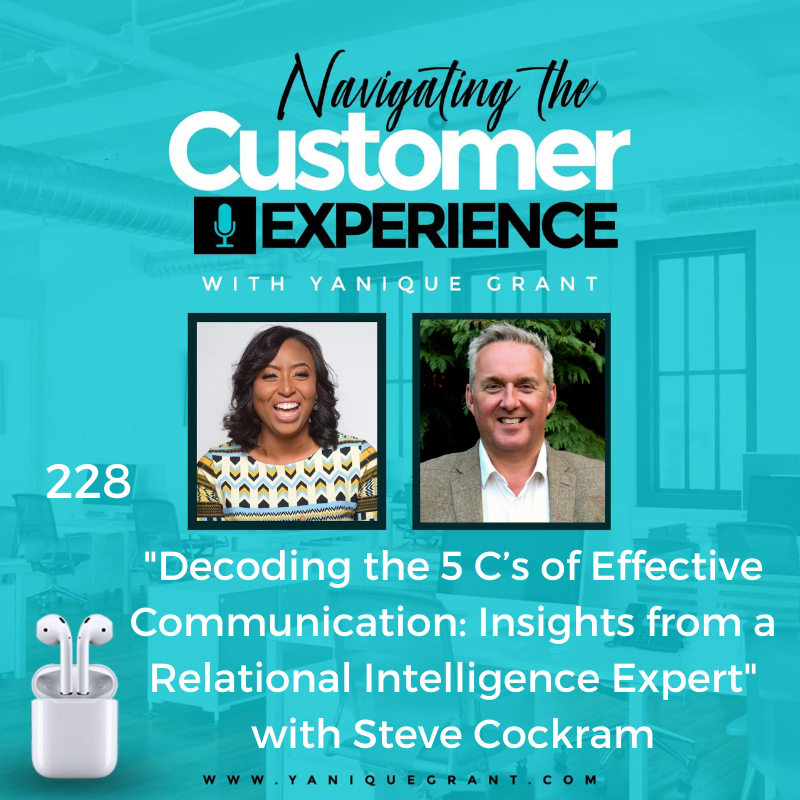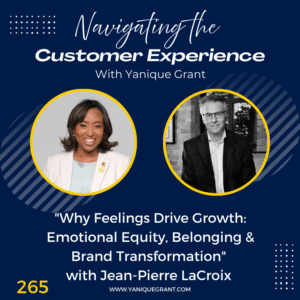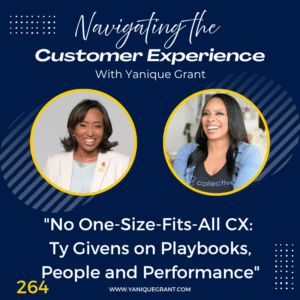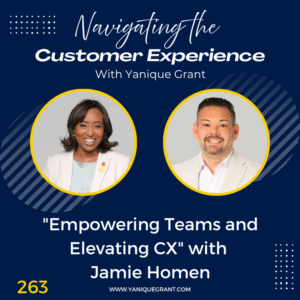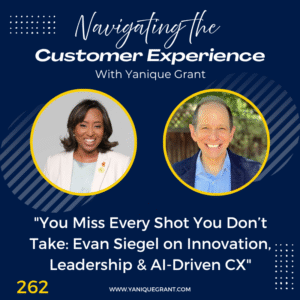Steve Cockram is an inspirational communicator, serial entrepreneur, confidant to elite leaders around the world and co-creator of the world’s premier “Leadership Toolkit”.
He has co-authored The 100X Leader, 5 Voices and The 5 Gears with his business partner, Jeremie Kubicek. Their new book, The Communication Code, released in November of 2023.
Questions
· So, we always like to give our guests an opportunity to share in their own words, a little bit about their journey, how you got from where you were to where you are today?
· Your book, The Communication Code, you wrote it with your business partner, Jeremie Kubicek, could you share with us a little bit about that book, maybe three overarching themes or tenets that the book focuses on? And kind of who is the book geared towards?
· Now, you mentioned the five C’s in terms of communication code, if I wanted to know or one of our listeners wanted to know what’s my primary communication code? How do I know? Is there like a test that you can do?
· What do you think is critical in customer experience? If we were to look at the different code, channels that you spoke to us about the five C’s, do you think they’re all critical? Or do you think there may be one or two that definitely must occur in that interaction?
· When you’re explaining to me the five C’s just now and you said in terms of communicating, you have to be really good at asking questions. How can you improve on the ability or the competence of asking the right types of questions? Because that’s critical to the whole communication process, if you’re not asking the right questions, then you’re not going to get the right responses to get to the solution.
· Now, Steve, could you share with us what’s the one online resource, tool, website or app that you absolutely cannot live without in your own business?
· Now, could you share with our listeners as well, Steve, what’s the one thing that’s going on in your life right now that you’re really excited about? Either something you’re working on to develop yourself or your people.
· Where can listeners find you online?
· Now, before we wrap our episodes up, Steve, we always like to ask our guests, do you have a quote or a saying that during times of adversity or challenge, you will tend to revert to this quote if for any reason you got derailed or you got off track, the quote kind of helps to get you back on track. Do you have one of those?
Highlights
Steve’s Journey
Me: So, we always like to give our guests an opportunity to share in their own words, a little bit about their journey, how you got from where you were to where you are today?
Steve shared what an interesting question that is, nobody ever in their right mind have done all the things he’s done in the last 30 years. So, he’ll give the highlights. He was a school teacher, an entrepreneur, a nightclub owner, a pastor, a coach, consultant, and been running Giant really with Jeremie for the last 11 years. So, he always say if you were to meet his friends at the age of 30, and ask who would be the least likely guru on relational intelligence? Probably, he would be in everyone’s top three.
So, everything they’ve learned usually has come out of their own personal failure and trying to work out why human beings behave the way they do. And also, how can they help people do relationships better in every area of their life? That’s really been the heart and the joy of the last few years.
About Steve’s Book – The Communication Code
Me: So, your new book that was mentioned in reading your bio, The Communication Code, you wrote it with your business partner, Jeremie Kubicek, could you share with us a little bit about that book, maybe three overarching themes or tenets that the book focuses on? And kind of who is the book geared towards?
Steve shared that they kind of say the book is for anyone who is involved in any form of human interaction relationship, i.e., everyone. They write for leaders really, but he honestly believe all the resources they created, this is probably the one that leaders apply most in their home relationships as much as they do anywhere else.
So, the premise gives you a couple of things. One is that transmission of information is not the same as effective communication. So, just because you’ve sent information to someone does not mean that they’ve understood the intent with which you’ve sent it or your expectations as to how you would wish them to respond. So, they use the analogy of saying, if you think of a communication code for those sort of like the enigma machine or a codebreaker, if I could send to you a communication code in advance of the transmission of information, which shared with you how I would like you to respond, we are more likely to meet each other in the middle and communicate effectively.
So, the basic premise is there are five communication codes, each come with clues. If he said to Yanique, “I’m going to send this to you, I want you to critique it, I want you to tell me why it’s not going to work, you won’t hurt my feelings. It goes live in two hours. If there’s mistakes, I want to know, full critique invited.”
Second one is Collaboration, where basically he says, “Yanique, I’ve been working on something, I think it’s pretty good, but I think you can bring things that will make it better.” So, full collaboration, please help make this better, whatever that is.
Clarify, if he says to you, “Yanique, you know I’ve got something really important to share, I don’t think it’s going to come out perfectly first time. Would you ask great questions, don’t try and critique or collaborate too soon. Help me get out what I’m really trying to say.”
Because clarification is usually the ability to ask questions before you launch into something else.
Care is the fourth communication code, which says, this is what I got wrong many, many times where just because someone is transmitting information to him, doesn’t mean they want him to fix them, solve them or be their consultant. Care means, “Steve, I am struggling right now, what I’m going to say to you probably bears no resemblance to what the real issues are. I just need to know that somebody cares enough about me to be present, to listen, not trying to solve me, not trying to fix me.”
Then the last one was celebrate, which is, he might say, “Yanique, hey, before we go on, this is really important to me, I’d love us to take a moment to celebrate something really special, not move on too quickly and go.”
So, the idea being is you’d be amazed if you add five communication codes that you send in advance of the transmission of your information, you will find that basically, relationships that you struggle with at work, with the people you lead, even the people you have at home, you will be amazed what happens when you actually give them clues as to how you want to respond.
So, there you go, that’s the quickest overview he’s ever given of the communication code book, so apologies if that was longer than you were hoping, but he hopes it at least wet your appetite.
Me: It did. So, just run back through the five C’s for me. You said Critique, Collaboration, and what was the third one?
Steve shared, Clarify, Care and Celebrate.
So, what happens is that all of us have default communication codes that are wired into our personality. So, when he doesn’t think about it, he automatically tries and collaborate but it’s experiences critique. His wife, for her care is number one, and clarify is number two. So, when people present to him things that they’re struggling with, unless he’s intentional, he will usually try and solve their problems.
And it’s amazing how often that goes wrong because he’s not actually able to meet the expectations, unspoken by the way of the person on the other side of him and just for every leader, every day when you’re managing people in different contexts will almost always end up with miscommunication, this is just simple. Children can learn it and understand it, they use it at home the whole time. And it’s been transformative, so that’s why they share it.
Understanding Your Primary Communication Code
Me: Now, you mentioned the five C’s in terms of communication code, if someone wanted to know what was their primary code, right, because you said your primary one is collaboration, but it’s received as critique. And your wife’s care and clarify. So, if I wanted to know or one of our listeners wanted to know what’s my primary communication code? How do I know? Is there like a test that you can do?
Steve shared that there is, if you go to www.giantworldwide.com, there’s a free assessment there. Or it might be actually www.giantos.com.
So, there’s a free assessment. But it’s really interesting when actually you begin to think about the transmissions of the miscommunication. So, a lot of people either think by sending an email they’ve communicated effectively, and the reality is, the moment you grasp as a leader that transmission is not the same as effective communication, you also begin to think, how could I use this, now he’ll even use it with people who haven’t learned the communication code. He’ll say to them, “Hey, before I respond to you this moment, you’ve asked me for this. Can I just be clear, what do you hope happens here? Are you asking me just to listen and be a good friend or a good boss? Are you asking me to celebrate with you? Do you want to ask good questions, you asked me to help make it better? Or do you want me to tell you why I think it will or won’t work?”
So, if you think about it, you can become intentional immediately and amazingly when people believe that you are more relationally intelligent as a leader, you’ll be amazed at how much your influence grows with the teams and the people you lead every day. It’s amazing what people do when they feel that they’re being listened to, heard and that you’re committed to trying to really hear what they’re trying to say, rather than what he guesses he used to do, which was just respond with whatever he thought was most appropriate in the moment, or whatever pressure he was dealing with.
The Importance of the Five C’s in Customer Experience
Me: Now, a big part of communication, Steve, and I’m kind of bringing this back to customer experience, right? Typically, a customer will reach out to an organization for primarily two reasons, to make a request, it could be for an existing service that they have with your company or product, or it could be for a new service that they’re seeking to attain. Or they’re calling because they have a problem and they would like it resolved. So, primarily those are like the two channels that customers will reach out to you for. What do you think is critical in customer experience? If we were to look at the different code, channels that you spoke to us about the five C’s, do you think they’re all critical? Or do you think there may be one or two that definitely must occur in that interaction?
Steve shared that it’s a really good question. His instinct in EQ is to say that clarify is probably the place to start. Because in a sense, the clarification is what are they really wanting to happen? What are they really hoping happens? And he guess asking the right questions in the beginning, for those of us who are problem solvers, we tend to launch into problem solving quickly.
And he would say that really understanding, well, is somebody just wanting a rant, does somebody just want to have their pound of flesh and get that off there and he just needs to sit there and care and not try and solve it. Or do they have a specific problem that they really hope he can help them with?
He thinks it’s unlikely that celebrate is going to be the agenda, but it would be nice if they were ringing up to say how amazing they think your product is. But he would say probably the clarify is where you start and making a judgement of whether what this person really wants is just you to listen, or whether they’re actually more likely inviting you beyond the initial clarification into a collaborative process, how do I help bring a resolution to the reason that you are contacting customer service?
Now, he thinks the other one, he doesn’t know what it’s like in your part of the world, but you’d be amazed how many people will spend an awful long time waiting to get through to a customer service line. So, he thinks sometimes the disarming connection, the saying, “I’m so sorry. I’m aware you’ve had to wait a long time, I would love to be able to do everything I can to help you resolve whatever the issues are.” He always think that goes a long way with him when someone at least recognizes that he’s probably been on the call longer than he was hoping he would be.
Improve on the Competence of Asking the Right Questions
Me: Agreed. So, I’m happy you said clarify, because the question I really wanted to ask you, but I kind of wanted to hear what you would have said based on the customer experience approach is. When you’re explaining to me the five C’s just now and you said in terms of communicating, you have to be really good at asking questions. And it has been my experience as a customer service trainer and even as a podcaster, I must say I’ve gotten much better at doing it over the years, but I find a lot of people who are in customer service practitioner roles struggle with this, like how can you improve on the ability or the competence of asking the right types of questions? Because that’s critical to the whole communication process, if you’re not asking the right questions, then you’re not going to get the right responses to get to the solution.
Steve shared that he thinks you actually master your content and the products of which you are going to be answering people’s questions. There’s a competency filter which means, “Do you know how to help somebody in that process?”
And he thinks it’s different again, whether you’re doing it online, or telephone or whether you’re maybe in a physical place, like if he goes to the Apple store, the geeks helped him, there’s different things he would say depending on whether it’s face to face or whether more likely it’s even just over a phone because he thinks you have to remember is that communication, only 10% of communication is the words that are used, 35% is the tone with which the words are offered. And then 55% is the nonverbal communication body language.
So, you’re delivering customer service and all you have his tone of voice and words, you’re already having to work hard to really understand what is it this person is seeking to communicate.
So, for him, he thinks that communication part is potentially really helpful, because it’s almost taking the time to clarify and ask the question to really make sure you understand what the intent and the expectation.
So, there’s the two things that he’s always trying to understand when someone’s speaking to him, what is their intent really? And what is their expectation of this engagement? Even if he knows they probably won’t tell him, or they may be unaware of even knowing what it is in the first place is the reason communication is so difficult to train.
But it’s also how people have tools, it becomes really significant when people are able to begin to decode what is the intent, what is the expectation, in his world, obviously, you alluded to something called five voices, he spent about the last 20-25 years trying to work out why humans behave the way they do and understanding that different personalities react very predictably to different interactions. Now, that’s probably a high level of sales skills and customer service is a degree of sales if you think about it.
But actually, there’s another piece that if people want to add skills, begin to listen to the words that people use, whether that’s in the way that neuro linguistic programme would, programming would start to think about, do they talk about what they see, what they hear? Or are they more kinesthetic and in our language of voices, he’s listening for what type of personality is presenting themselves to him in the way that they engage, in the way they communicate.
So, he would argue that in any human interaction, the person communicating, transmitting to you is giving you lots of clues.
The question is, to your point, how much time do we really spend listening and trying to understand, discern who this person is, what their intent, what are the expectations before we launch into probably what they were expecting, which is a more collaborative approach to how do we help resolve their issue, bearing in mind that the presenting issue may not be the real issue.
There’s so much in there, here’s the thing he’ll encourage to anyone who’s really interested in developing their skills in this area, he’s your kind of Beacon of Hope, because he’s like 24 years on now into this as one of the least relation intelligent people by nature, sadly, by personality. And actually, now many would say, I think really hard about it because I’ve really had to learn, the things that don’t come naturally to you, you often end up being a better teacher and coach, because you’ve actually had to wrestle and struggle with your own inability at my time to listen.
They have a tool in their toolbox called the boomerang effect, learn to be interested before trying to be interesting. It’s like relational intelligence 101. And he thinks it’s amazing how often people want to talk to you about them and whatever you say, it reminds them of them or where they’ve been, that’s another area that he’s not sure where the customer experience particularly, but as a communication tip, it’s amazing what happens when you meet people are interested in you, more than trying telling you how interesting they are.
Me: Yeah. Well, it’s funny, you said that, because one of my very favorite books, and I try to read it at least once per year is How to Win Friends and Influence People by Dale Carnegie. And he talks about that in his book and I mean that book was published from 1933. So, it’s amazing that that fundamentally is still the case today, because we are true and true human beings and as you mentioned before, some traits are just predictable.
Steve agreed that they are, and he think that’s the bit which human behaviour is more predictable than any of us would ever give it credit for. And he thinks that’s the bit where, he doesn’t know whether you’ve watched the film called The Matrix. The moment you begin to understand why human beings behave the way they do, it’s a little bit like the green letters and numbers coming down the screen, and you begin to watch a human interaction in different dynamics, in different ways, and you suddenly began to realize, actually is it’s more predictable, and therefore if it’s predictable, it can be learned.
And that actually, without it being manipulative, we can actually really work on being far more relationally intelligent and that will help us in every aspect of our leadership, whether we’re working with our teams, or whether we’re working at home, or whether we’re ourselves engaging with clients and customers. But fundamentally, he would argue now that relational intelligence is now become even more important than classic IQ. AI does so much now. I don’t know how much you play with it, but in our world is ridiculous how intelligent AI is becoming. But the one thing it doesn’t do well, it doesn’t do the relational intelligence piece as well as human beings do.
And he’s not convinced that it will ever replace it. All he knows is it’s becoming, he often says that basically, the ability to establish, maintain and develop long term relationships inside and outside your organization is the primary currency of wealth and influence in the new world.
App, Website or Tool that Steve Absolutely Can’t Live Without in His Business
When asked about online resource that he cannot live without in his business, Steve shared that the differences in the geeks who run his business are, he tries to think what for him, he thinks 1Password as a middle aged man is the app that he loves the most he looked in before, and he has 376 logins and very secure pieces of data in one app, which basically means I doesn’t have to try and have 357 passwords identical. So, 1Password is the best. He doesn’t know what it is USD $3.99 a month. But actually, that makes him feel more secure and safe online, that’s him personally.
The business, he thinks if you were to speak to their team at the moment, they’re building an app, they use a software called Framer, but it’s a way in which you can see what technology in the app will be and do and look like before you actually have to actually engage in building the coding. So, he’s a massive fan of Framer, even though he’s not the person who actually runs it. There’s some far younger, clever UI, UX developers who do all that work. But fundamentally, he’s always massively impressive with what Framer does.
What Steve is Really Excited About Now!
When asked about something that he’s excited about, Steve stated that that’s a great question. Well, he thinks he probably alluded to it in the sense that they have worked for years to try and codify tools to help leaders do a better job in the visual world we live in. What they’re working on at the moment and this is the thing which he smiles as he says it. They’ve run a B2B business up until this point, they’ve licensed kind of coaches and consultants to use their stuff.
But they’re building a B2C app at the moment, which will take all of the Jedi mind tricks of the last 20 years about why people behave the way they do. They’ll take the best of their tools, the best of what AI is able to do, and they will create a five voices out which will come your way later this year, which basically is your personalized coach in relation to, it will know your personality and your wiring. And it will basically customize content and learning for you and allow you to access it in the way that you most love to learn.
So, if you want podcasts, ebooks, audiobooks, but the idea really of actually rather than having to read one book, and we all read the same thing. He’s watching the ability to customize content in form and style that is unique to you as an individual. And he’s never seen that before.
So, he thinks communication code will be the last book they write in the late industrial format of a published book. He thinks they will customize content for individuals in formats and voices even and length of time, you’ll be able to have your daily version of encouragement that will come straight to you when it comes, so that’s what the team is working on at the moment. He gets to see all the progress week by week and minimum viable products is going to be ready for mid-May. So, watch this space for personality driven grows customized to you.
Where Can We Find Steve Online
LinkedIn – Steve Cockram
Email – steve@giantworldwide.com
Quote or Saying that During Times of Adversity Steve Uses
When asked about quote that he tends to revert to, Steve shared that he’s got plenty of those. But probably the most common one is the Theodore Roosevelt quote when he talks about, “If he’s going to fail, he would rather fail while daring greatly than be counted among those cold, timid souls who know neither victory nor defeat.” So, that’s what he goes back to and just go, “If I’m going to fail, I’m going to fail while daring greatly, going after something big enough, that actually could make a dent and for good in the world.”
Me: Fantastic. So, we will have definitely have that quote in the show notes of this episode. So, just want to extend our deepest gratitude to you, Steve, for taking time out of your very busy schedule and coming on our podcast and sharing about your book, The Communication Code, the five C’s that you mentioned, how it works, the inner workings of why it’s important to listen, asking the right questions, understanding that relational communication is definitely the epitome of where we’re moving forward to in this world. And just how as human beings, we can utilize a lot of the cues and clues that are given to us to improve on how it is that we transmit the communication with each other. So, it was really insightful, and I just want to say thank you so much.
Please connect with us on Twitter @navigatingcx and also join our Private Facebook Community – Navigating the Customer Experience and listen to our FB Lives weekly with a new guest
Links
• The 100X Leader: How to Become Someone Worth Following by Steve Cockram and Jeremie Kubicek
• How to Win Friends and Influence People by Dale Carnegie
• The Communication Code by Steve Cockram and Jeremie Kubicek
The ABC’s of a Fantastic Customer Experience
Grab the Freebie on Our Website – TOP 10 Online Business Resources for Small Business Owners
Do you want to pivot your online customer experience and build loyalty – get a copy of “The ABC’s of a Fantastic Customer Experience.”
The ABC’s of a Fantastic Customer Experience provides 26 easy to follow steps and techniques that helps your business to achieve success and build brand loyalty.
This Guide to Limitless, Happy and Loyal Customers will help you to strengthen your service delivery, enhance your knowledge and appreciation of the customer experience and provide tips and practical strategies that you can start implementing immediately!
This book will develop your customer service skills and sharpen your attention to detail when serving others.
Master your customer experience and develop those knock your socks off techniques that will lead to lifetime customers. Your customers will only want to work with your business and it will be your brand differentiator. It will lead to recruiters to seek you out by providing practical examples on how to deliver a winning customer service experience!

